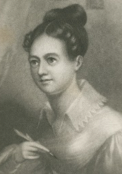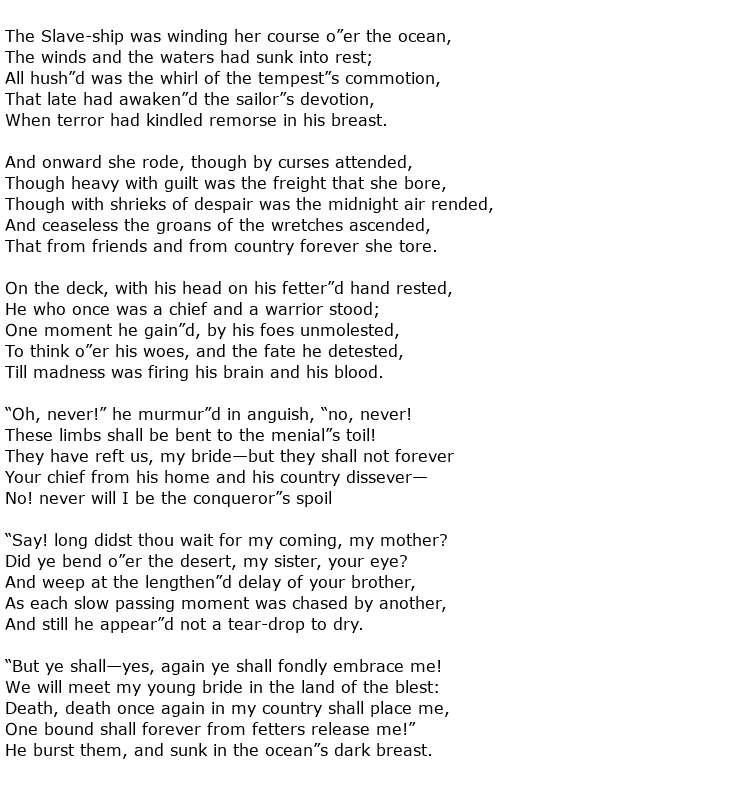 The American poet Elizabeth Margaret Chandler lived a very short life during the early part of the 19th century but made a name for herself championing the cause of the abolitionists of slavery through her poetry. No other female writer had done so before her.
The American poet Elizabeth Margaret Chandler lived a very short life during the early part of the 19th century but made a name for herself championing the cause of the abolitionists of slavery through her poetry. No other female writer had done so before her.
She was born on the 24th December 1807 in the town of Centre, Delaware to Quaker parents. The whole family stuck rigidly to the Society of Friends faith but tragically she was orphaned by the age of nine. Elizabeth and her brothers were forced to move to Philadelphia, Pennsylvania to live with their grandmother. She was enrolled into the local Quaker school which is where she first became aware of the anti-slavery attitude of her church, although it is believed that she only stayed in school until the age of 12 or 13. She began writing poetry on this subject and devoured anything she could find in books or other publications.
Her poem The Slave-ship was published and came to the attention of BenJamin Lundy, the owner of a periodical called The Genius of Universal Emancipation. He invited her to become a regular writer and she was soon editing a section of the paper called the “Ladies” Repository”. Through this she appealed directly to her female readers, urging them to get behind her in the abolition of slavery and for better treatment of Native Americans. Her stance was not supported quite so much by men and she was reminded that no woman would ever be powerful enough to do anything about slavery. Her response was forthright. She pointed out that women, should they become mothers, were uniquely positioned to:

Here is her prize-winning and powerful poem The Slave-ship:

Other newspaper editors latched on to her opinions and reproduced them in their own publications. Chandler created a unique abolitionist image which soon appeared all over the country. It was a cartoon picture of a black female slave, kneeling in subjugation, but making the appeal

A leading anti-slavery paper called The Liberator used the image at the head of its Ladies Section. The origins of the image could be traced back to a similar one of a male slave, designed by Josiah Wedgwood, which was used for the seal of the Society for the Abolition of the Slave Trade.
By 1830 Chandler, along with an aunt and one of her brothers, had moved to Michigan and they set themselves up here on a farm. The property was named “Hazlebank” and she found the environment very much to her liking. The Quaker newspaper proprietor and abolitionist Benjamin Lundy noted that:

In 1832 she set up the Logan Female Anti-Slavery Society along with a neighbour called Laura Smith-Haviland and one of her first proclamations was:

This society became an integral part of the famous escape route to Canada for slaves known as the Underground Railroad.
Elizabeth Margaret Chandler caught a severe fever and died on the 2nd November 1834, just short of her 27th birthday. Her unpublished work lived on though, being collected into two volumes by Benjamin Lundy. He ensured that all profits from the sale of these books went to the anti-slavery movement.

